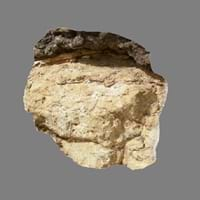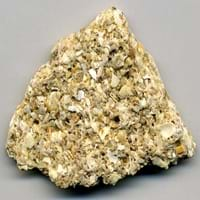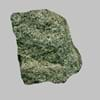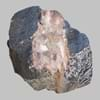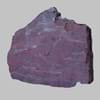Laterite and Coquina
Definition
Definition
Laterite rock is a type of Sedimentary rock which is rich in iron and aluminium, formed in hot and wet tropical areas
Coquina is a sedimentary rock that is composed either wholly or almost entirely of the transported, abraded, and mechanically-sorted fragments of the shells of molluscs, trilobites, brachiopods, or other invertebrates
History
Origin
India
European Foreland Basins
Discoverer
Francis Buchanan-Hamilton
Unknown
Etymology
From Latin later brick, tile + -ite1
From Concha (Latin)+ Coquina(Spanish) +conch(English)= Couquina (mid 19th century)
Class
Sedimentary Rocks
Sedimentary Rocks
Sub-Class
Durable Rock, Soft Rock
Durable Rock, Soft Rock
Family
Group
Not Applicable
Not Applicable
Other Categories
Fine Grained Rock, Opaque Rock
Coarse Grained Rock, Opaque Rock
Texture
Texture
Earthy, Massive, Porphyritic
Clastic
Color
Brown, Buff, Red
Beige, Buff, Orange
Maintenance
Less
More
Durability
Durable
Non-Durable
Water Resistant
No
No
Scratch Resistant
No
No
Stain Resistant
No
No
Wind Resistant
No
No
Acid Resistant
No
No
Appearance
Rough and Banded
Layered, Banded, Veined and Shiny
Uses
Architecture
Interior Uses
Decorative Aggregates, Flooring, Interior Decoration
Decorative Aggregates, Homes, Hotels, Interior Decoration
Exterior Uses
As Building Stone, As Facing Stone, Garden Decoration
Garden Decoration, Office Buildings
Other Architectural Uses
Curbing
Curbing
Industry
Construction Industry
Cobblestones, for Road Aggregate, Landscaping, Roadstone
Building houses or walls, Construction Aggregate
Medical Industry
Not Yet Used
Not Yet Used
Antiquity Uses
Artifacts, Monuments, Sculpture
Artifacts, Monuments, Sculpture, Small Figurines
Other Uses
Commercial Uses
An Oil and Gas Reservoir, Source of bauxite, Used in aquariums
Creating Artwork
Types
Types
Not Available
Not Available
Features
Is one of the oldest rock, Very fine grained rock
Available in Lots of Colors and Patterns, Is one of the oldest rock
Archaeological Significance
Monuments
Used
Used
Famous Monuments
Data Not Available
Data Not Available
Sculpture
Used
Used
Famous Sculptures
Data Not Available
Data Not Available
Pictographs
Used
Used
Petroglyphs
Used
Used
Figurines
Used
Used
Fossils
Present
Present
Formation
Formation
Laterite is a type of sedimentary rock which is generally a reddish weathering product of basalt.
Coquina is a sedimentary rock which is formed when billions of small clam-like seashell, called Coquina, or cockleshell are die and hence are deposited, buried and turns into a rock when pressure is applied.
Composition
Mineral Content
Aluminum Oxides, Biotite, Hematite, Hornblade, Iron Oxides, Manganese Oxides, Micas, Muscovite or Illite, Plagioclase, Pyroxene
Apatite, Augite, Bronzite, Calcite, Chert, Chlorite, Clay Minerals, Epidote, Feldspar, Garnet, Micas, Muscovite or Illite
Compound Content
Aluminium Oxide, CaO, Iron(III) Oxide, FeO, Potassium Oxide, MgO, MnO, Sodium Oxide, Phosphorus Pentoxide, Silicon Dioxide, Titanium Dioxide
CaO, Carbon Dioxide, Iron(III) Oxide, MgO
Transformation
Metamorphism
No
No
Types of Metamorphism
Not Applicable
Not Applicable
Weathering
Yes
Yes
Types of Weathering
Biological Weathering, Chemical Weathering
Biological Weathering, Chemical Weathering, Mechanical Weathering
Erosion
Yes
Yes
Types of Erosion
Chemical Erosion, Water Erosion, Wind Erosion
Coastal Erosion, Sea Erosion, Water Erosion, Wind Erosion
Properties
Physical Properties
Hardness
2
1-2
Grain Size
Fine Grained
Coarse Grained
Fracture
Conchoidal
Irregular
Streak
White
White
Porosity
Highly Porous
Highly Porous
Luster
Dull
Dull to Vitreous to Submetallic
Cleavage
Not Applicable
Not Available
Toughness
Not Available
Not Available
Specific Gravity
Not Available
1.10-2.24
Transparency
Opaque
Opaque
Density
Not Available
2.8-2.9 g/cm3
Thermal Properties
Resistance
Heat Resistant, Pressure Resistant
Heat Resistant, Impact Resistant, Pressure Resistant, Wear Resistant
Reserves
Deposits in Eastern Continents
Asia
India
Not Yet Found
Africa
East Africa, Western Africa
Not Yet Found
Europe
England, Romania, Scotland
United Kingdom
Others
Not Yet Found
Not Yet Found
Deposits in Western Continents
North America
Canada, USA
USA
South America
Not Yet Found
Not Yet Found
Deposits in Oceania Continent
Australia
Central Australia, Western Australia
Not Yet Found
All about Laterite and Coquina Properties
Know all about Laterite and Coquina properties here. All properties of rocks are important as they define the type of rock and its application. Laterite and Coquina belong to Sedimentary Rocks.Texture of Laterite is Earthy, Massive, Porphyritic whereas that of Coquina is Clastic. Laterite appears Rough and Banded and Coquina appears Layered, Banded, Veined and Shiny. The luster of Laterite is dull while that of Coquina is dull to vitreous to submetallic. Laterite is available in brown, buff, red colors whereas Coquina is available in beige, buff, orange colors. The commercial uses of Laterite are an oil and gas reservoir, source of bauxite, used in aquariums and that of Coquina are creating artwork.
|
||
|
||
|
